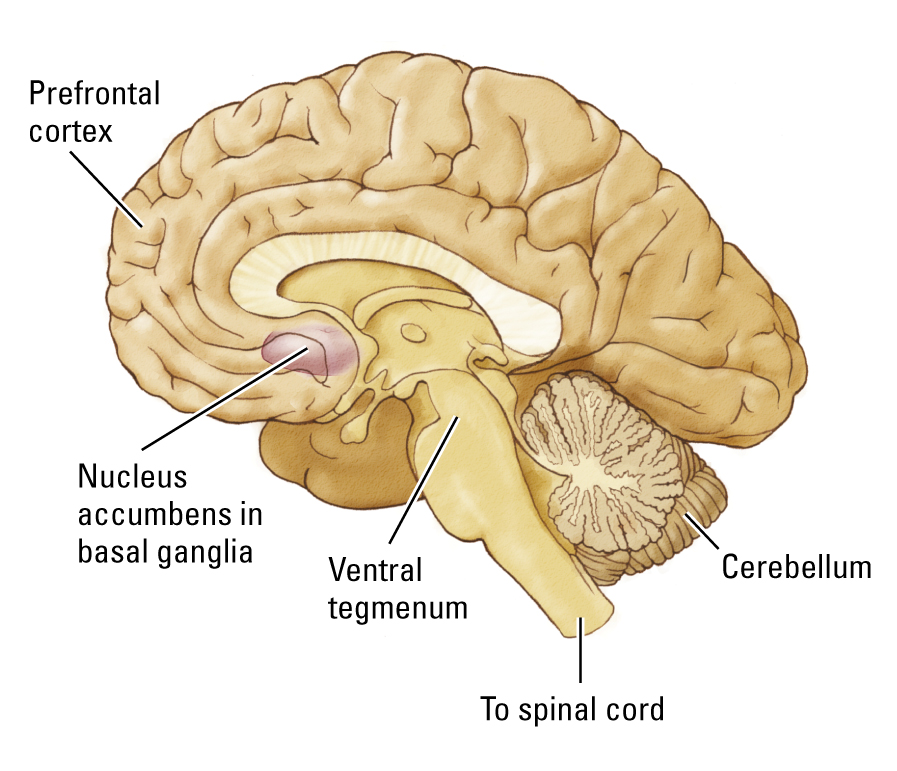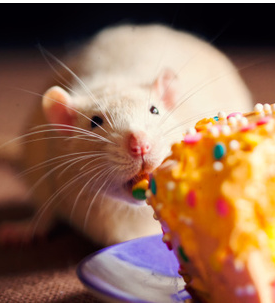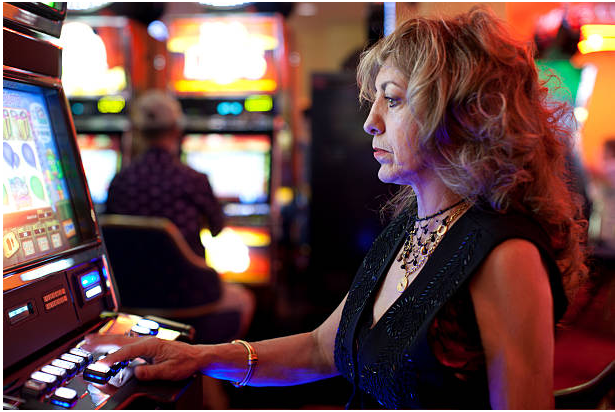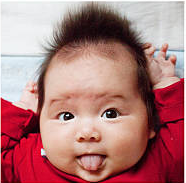Chapter 1. Reward System: Wanting and Liking
1.1 Reward System: Wanting and Liking
The Brain’s Reward System
By: Dr. Simon Spanswick, University of Calgary
1.2 Introduction
Picture this: You have just had dinner, but you still want a snack. You walk into your kitchen, open the cupboard, pull out a box of cookies, and begin eating. This is an ordinary event for most people, but where do these events occur in the brain? In this activity, you will explore the roles of several different brain structures in reward.
After completing this activity, you should be able to:
- Identify the neural circuits and structures associated with reward.
- Describe the reward system in the brain and its role in generating behavior.
- Describe the brain’s wanting and liking systems.
This activity relates to the following principles of nervous system function:
- Principle 6: Brain Systems Are Organized Hierarchically and in Parallel
- Principle 9: Brain Functions Are Localized and Distributed
- Principle 10: The Nervous System Works by Juxtaposing Excitation and Inhibition
1.3 Neural Circuits Underlying Reward
Animals engage in a number of behaviors because they are rewarding. This applies to both adaptive behaviors (such as eating, exercise, and sexual activity) and potentially nonadaptive behaviors (as in the case of drug addiction). It should come as no surprise that a number of neural circuits mediate the process of reward. Much of what we know about reward has come from stimulation studies that activate these neural circuits.
Let’s examine some of these circuits, as well as the neurotransmitter systems that are involved in reward. In this activity, first you will watch as an electrode is lowered into the brain where it will stimlate some of the areas of the mesolimbic and mesocortical pathways involved in the reward process.
[insert animation 12-1 Rewards (to be done by a separate vendor)]
Now click on the structures listed to the right to read about the role they play.
Note: you must choose all descriptions before proceeding.

Located in the mesencephalon (midbrain), the ventral tegmentum contains a number of dopaminergic cell bodies and is the source of the mesolimbic and mesocortical pathways.
In combination with the ventral tegmentum, the nucleus accumbens (along with the olfactory tubercle) forms the mesolimbic pathway, often referred to as the brain’s reward pathway. Dopamine released by neurons in the ventral tegmentum acts on neurons in the nucleus accumbens. Activity in the mesolimbic pathway plays a role in feelings of reward and pleasure.
The prefrontal cortex is connected to the ventral tegmentum via the mesocortical pathway, and it is thought to play a role in cognition and motivation. Just like the mesolimbic pathway, it relies on dopamine as the primary neurotransmitter.
Dopamine projections from the ventral tegmentum terminate in the granule cell layer of the cerebellum. Because the cerebellum plays an instrumental role in producing movement, it has been hypothesized that the mesolimbic (reward) pathway might mediate the coordination of voluntary movement.
1.4 Review the Reward Pathway
Before we move on, let’s review the major components of the reward pathway.
Match the correct words to the following statements.
Note: you must choose all answers before proceeding.
Question
1. Innervated by dopaminergic projections from the VTA, the x6CPnlmsFMmgvoAWSRapqDQTMu+2TXRUttK/efhyMt4uYwrL44O2IUAu6jKgxU++RL6UnAsFC4pmnz/EkHw0fSCYZjymfDW4PRMH8eL5byZsQmD9LEKTm7UIyXFtCFQ2cW6m+7sV7o2Zzfbf/bFn06UJRLaD+EdIPpOnphpYTvVqoMq04NvgHZaI75bQqXRgTGNpngCTP28= plays a role in the generation of voluntary movement.
2. The dHxVhUxXVRKIV5Q5kTgCO0IgtynDJgU8pf8bcbs5wpkx47fK8s1XGvUKvrItGJJVdd9hRu88QkihWug83G6E5SfmWARUmuBYbAk4xgHgC9duKYLW1lHYgcQ+AIdjYh+avMcQVeeHRiA0uDNH0Qrd2o8JUhe7IWvdvVni1+JDUunH/KNEnh6Dy5SqjCv2zt4+vVJdprErmak= is the source of both the mesolimbic and mesocortical pathways.
3. The ventral tegmentum is connected to the De+WTPOh8TUpa7D+1SxrBnHyYn1niGbG/twJq1sV8fuhr9tsBiHfYJief8vuOO8JymFuqdr1pzx7irej0DgOG9Nr4TXpWSjYp4kjaWSYd+X4WrshA25SLZgRiaNnkYG8m8niLZDWUM4oZhlIA+qy6/zMPN/3cIsZ5GuA/RuXW6iYcmjZWJkE9vraleFdaGIR+UZ9Ykv5qBU= via the mesocortical pathway.
4. The mesolimbic pathway terminates in the 95wKUotGM7PGGvJPI5O9AHsFwBQtMFQzTqx5j35ZDWLFlaLicM6e75qBWJ7TStzBaUTxsmnZb+sbUsppzNjIR3mfEcHdRVyzVAgmmvA7/E/CK+tgCzj/7RaOCwkNSewPxVvkQLkgzZvYWvM7X6FKMySgIgkzrVAuLFlWTh8D1MLDr7N/Bfrv7OuruMdjsheceesl+8ZPaok= .
5. The primary neurotransmitter in the mesolimbic pathway is BrrYYDi9GpBAu0DjQRY8QPcGoxsupn49q+lDf1DaBxtIr4UQMgq9kKLtui+29a70mbsVbO/MBGFmPHtL10GnTob6htLeKOSY0+gxSiBIwB/MMl0Dr/csAgM42gzWHdowl+rP2Cg3oaydSNDa2fi8+O8ezmtUwGQKSAJuSHxKfl5PrVnTHYcupphNCKJ2FJYjiqFhhQKKEr4= .
1.5 Reward Systems in the Laboratory
Although we often think of reward as a single process, reward actually involves several different components. Researchers Berridge and Robinson highlight three distinct elements of reward: learning, motivation (wanting), and pleasure (liking). In this activity, we focus on how the circuits in the brain support motivation and pleasure. Let’s examine how these different circuits work in the brain of a rat.
Note: Click on both Wanting and Liking to read a brief description of each system.
Recall that dopamine release in the brain is part of the reward process. Here we see that dopamine is involved specifically in motivation for reward, often referred to as wanting. This process is separate from liking. The reward system is activated regardless of the type of reward: chocolate, sex, and drugs of abuse all result in an increase in dopamine activity in the mesolimbic pathway. Much of what we know about reward comes from laboratory experiments that activate this system. This video shows that when electrical stimulation of the mesolimbic pathway is paired with a bar press, the rat increases the bar press behavior.



In addition to involving dopaminergic circuitry, the process of reward is mediated by hedonic (pleasurable) hot spots in the brain. Activation of these hot spots is thought to underlie the liking component of reward. Whereas the wanting circuits rely on dopamine, the liking circuits rely on opioid and endocannabinoid neurotransmitters. Although each hot spot is relatively small, these spots are understood to operate in a unified manner to signal pleasure. For example, in experiments with nonhuman animals, oral administration of a pleasant, sweet substance elicits a stereotypical response (tongue protrusions). This response is believed to be mediated by the activation of the hedonic system. You can see the remarkable similarities in liking behavior across different species.
1.6 Reward Systems in Real Life
Each circuit of the reward system is responsible for a different component of reward. The wanting system and liking system overlap, but their functions are separate and distinct. Now let’s consider some examples of the reward system in humans.
Click on both Wanting and Liking to read some brief examples of each system.


The wanting (motivated) behavior in rats can be driven by electrical stimulation of the mesolimbic pathway. The same pathway is responsible for remarkably similar behaviors in humans. Motivation to gamble and smoke is associated with an increase in dopaminergic signaling in this pathway. Interestingly, long-time smokers often report wanting to smoke but not actually liking the fact that they do so—providing yet more evidence that these two phenomena are separate. Notice how similar the gambling behavior of people is to rats bar pressing for reward!



Just as in the rat, we see hedonic hot spots in the human brain. These same regions likely mediate liking in humans. It should come as no surprise that activation of these hot spots produces similar types behaviors to those you observed in the rat. In fact, humans respond in very much the same way rats do to the presence of a sweet substance.
1.7 Review of the Wanting and Liking Systems
Now let’s review. Which of the following are involved in the brain’s wanting system, and which are involved in the liking system?
Sort each of the following items into either Wanting or Liking.

Question
j+7gyhaR1dpgW0XTQQFIFvoADWgibJBR71N4YFQN18zJeYld6Cae/wb/Cjb+iPUaur8p11xIiHYIY2vCpsZ7iBziR4D8hSrN9zBmV83CcF8bB/erWlkQcz7Hi/D8dKSXaQFcv1rRJH6rIK5drm5PIiD+W09H3Sc4I+IFT4LOxcnbE1bus7PQpa9C2QQM/5CBceiYzr6VAp1PGPv5yQiDfQliKCuNu+QZi9kFiCgY8igM6U38gIjVlnXQ2xacZiC1NWVsbiuYmIKu/sm9uy13ECtcGANFqO64yO9TZ5YUab7fN577cHlGumv24CJ+tBcXInB8xe7YdKn/GI0rbowtJ2kHI0p6EcxLpyFzUAbZr3AS7w7u1jbufxjrQjxPK4BN/yIuMN4xd2uHpIh2xIjcXTgB58S6E3kTmKwiCcMIF2LdasI23K3UvOsS7djkqpM4hZ93WF6pKKILjOxNTPQuMzIysARqJqAn3PNKu4n/e/rz2z+k+dDVyaC+oIknzD1L/zWtBj+uabMGK839B5lIZuV+ir6c9gPSn+vqBF8Jk8DT6cKqVNbiQ7vy1HzWPVsQtag1ITZ54yxDTIJaMh0wYXe0ejNDYp9vSYJJT+5HP91QTzb3SVanaVmfaSCyRz8PQ4dFPUiOwbdTtV5y27ksTBS98bWhqYEeJ9BRrZV75++cjgOfh+iiXhHk99LCWRxWHXGuHzQ30wPh3eH6HkWzJ/L/Ffp0pEsro9iu/vDO/wPtM+x/BiYlqtfHxFTnN5dx5x/fIykpoespJtmhFPXGwFl9NgFh6cxDPgxfwmBBq0d/+hTHazDWFEAlqnB5izqLsez+UpaI0Gwl5wvnM56mjMh8IlN6qqiSoDjjRYRPa1OxR6hlA0wUoR1M58gHZosw/K7atfxaLIU1tiASC+dho5cLbJNEnCPIlt1qxFVp6/HxXI6W6Y/19jAniMNlYHFlJ/Hq5XcSb88Tu2A+OPhRnYhgAvVFQEaSbVbbX2vnVbqjM1pPPDSO0995Lf3JLBH5adIrwEWowD+ZO/VXcKhiTcXJGRN8WHN1K5Lq0AgBrwpu2qvi2lB1I6dfwlhl8yNpqS/4AqwfKBRT5oENrxTXRYDk0nJqG/ZKt+8nuZrPYqnPIoYTLcK1XNF9bS2408uOkJNLYyfOFM/1zF0z5RjVVCgyt7EKNzOT8JOAaqEK1dKwARjJNeNynFZChdMrtNmhUg67TYDpelqIuWF+Ei+6Jokiav8qjKH8Krv8996P44D6nCnJCBYAeKq0QTtmBj1Sy2+c/zth4KA=Wanting System
Liking System
1.8 Summary
Congratulations! You have successfully completed the activity. In this activity you explored the structures and neural circuitry associated with reward, the separation between the brain’s wanting and liking systems, and the roles of these systems in generating behavior.
Your instructor may now have you take a short quiz about this activity. Good luck!